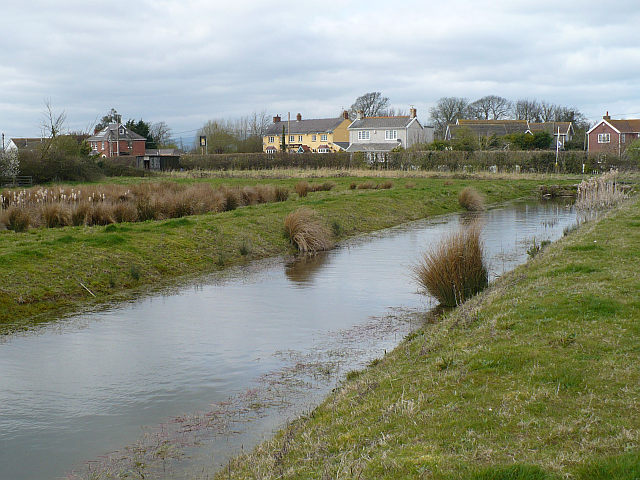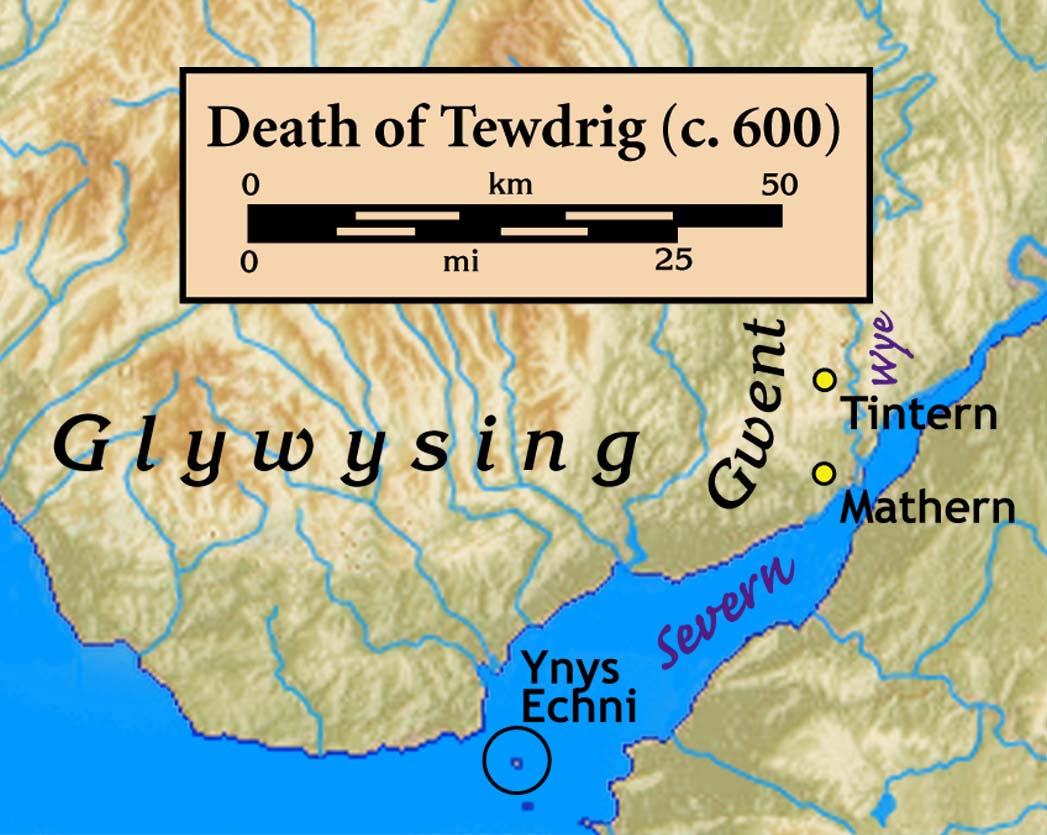|
Whitson (other)
Whitson is a village on the outskirts of the city of Newport, South Wales. It is located about south east of Newport city centre on the Caldicot Levels, a large area of coastal land reclaimed from the sea. Administratively, Whitson is part of the community of Goldcliff. Origin of the name Sir Joseph Bradney, in his ''History of Monmouthshire'' (1922), is undecided on the derivation of the name of the manor and surrounding village, but notes early spellings such as Witston, Widson and Wyttston. It seems most likely, however, that the name came from "Whitestone", similar to the adjacent "Goldcliff". In 1358 the manor was held "...by John de Saint Maur of Penhow of Peter de Cusance by knight service, as of his manor of Langstone". In the 18th and 19th centuries the Phillips family owned a large estate in the parish and lived at what was then called "Whitson House" (now "Whitson Court"). Character Together with the neighbouring larger parishes of Nash and Goldcliff it is o ... [...More Info...] [...Related Items...] OR: [Wikipedia] [Google] [Baidu] |
Goldcliff
Goldcliff ( cy, Allteuryn) is a village, parish and community to the south east of the city of Newport in South Wales. It lies within the Newport city boundaries in the historic county of Monmouthshire and the preserved county of Gwent. Administratively, the community of Goldcliff includes the village/parish of Whitson. The population in 2001 was 233; by 2011 it had risen to 329. Toponymy The name is said to have originated from the siliceous limestone cliff, standing about high, at Hill Farm, rising over a great bed of yellow mica which breaks the level at the shore and has a glittering appearance in sunshine, especially to ships passing in the Bristol Channel. Giraldus Cambrensis, who toured Wales in 1188 refers to the location as "Gouldclyffe" and describes it in Latin as "...glittering with a wonderful brightness". Bradney, Sir Joseph, ''A History of Monmouthshire, Vol 4 part 2: The Hundred of Caldicot'' (Part 2). pub 1914, reprinted 1994, Merton Priory Press. Character ... [...More Info...] [...Related Items...] OR: [Wikipedia] [Google] [Baidu] |
Dean Of Llandaff
Dean of Llandaff is the title given to the head of the chapter of Llandaff Cathedral, which is located in Llandaff, Cardiff, Wales. It is not an ancient office – the head of the chapter was historically the Archdeacon who appears in this role in the ''Liber Landavensis'' and in the Chapter Acts preserved in the Glamorgan Records Office – but the office of a separate Dean was established by act of parliament in 1843. A century later the Deanery was merged with the Vicarage of Llandaff. The Chapter forfeited its legal rights on Disestablishment in 1920, when the Dean and Chapter as an ecclesiastical corporation was dissolved, under the terms of the Welsh Church Act 1914. There continues, however, to be a Dean and Chapter under the scheme or constitution made under the Constitution of the Church in Wales. Deans of Llandaff *1840–1843 John Probyn (archdeacon and dean) *1843–1845 William Bruce Knight *1845–1857 William Conybeare *1857–1877 Thomas Williams *18 ... [...More Info...] [...Related Items...] OR: [Wikipedia] [Google] [Baidu] |
Diocese Of Llandaff
The Diocese of Llandaff is an Anglican (Church in Wales) diocese that traces its roots to pre-Reformation times as heir of a Catholic bishopric. It is headed by the Bishop of Llandaff, whose seat is located at the Cathedral Church of Saint Peter and Saint Paul in Llandaff, a suburb of Cardiff. It currently covers most of the former Welsh county of Glamorgan, but once stretched from the River Towy to the middle of the Wye Valley. Archdeaconries and deaneries The diocese of Llandaff is currently divided into two archdeaconries: Llandaff and Margam. From 2002–2020 there was a third archdeaconry, that of Morgannwg; in 2020, of its four deaneries, Pontypridd and Merthyr Tydfil & Caerphilly moved to Llandaff, and Cynon Valley and Rhondda moved to Margam. ;Archdeacons of Llandaff See Archdeacon of Llandaff ;Archdeacons of Margam See Archdeacon of Margam ;Archdeacons of Morgannwg *2002–2004 (ret.): Martin Williams *2004–2006 (res.): David Yeoman *2006–2020: Chris Smith ... [...More Info...] [...Related Items...] OR: [Wikipedia] [Google] [Baidu] |
Clergy House
A clergy house is the residence, or former residence, of one or more priests or ministers of religion. Residences of this type can have a variety of names, such as manse, parsonage, rectory or vicarage. Function A clergy house is typically owned and maintained by a church, as a benefit to its clergy. This practice exists in many denominations because of the tendency of clergy to be transferred from one church to another at relatively frequent intervals. Also, in smaller communities, suitable housing is not as available. In addition, such a residence can be supplied in lieu of salary, which may not be able to be provided (especially at smaller congregations). Catholic clergy houses in particular may be lived in by several priests from a parish. Clergy houses frequently serve as the administrative office of the local parish, as well as a residence. They are normally located next to, or at least close to, the church their occupant serves. Partly because of the general conservati ... [...More Info...] [...Related Items...] OR: [Wikipedia] [Google] [Baidu] |
Caldicot Hundred
Caldicot was an ancient hundred of Monmouthshire, Wales. It was situated in the south-eastern part of the county, bounded on the north by the hundreds of Usk and Raglan; on the east by Gloucestershire; on the south by the Bristol Channel, and on the west by the hundred of Wentloog. It contained the following ancient parishes:Joseph Bradney, ''A History of Monmouthshire: Vol.IV, The Hundred of Caldicot'', 1929 (reprinted 1994), *Bishton *Caerwent * Caldicot *Chepstow *Christchurch * Dinham * Forest of Wentwood *Goldcliff * Howick * Ifton *Itton * Langstone *Llandevaud * Llandevenny *Llanmartin *Llanvaches *Llanvair Discoed * Llanvihangel Roggiet *Llanwern *Magor *Mathern *Mounton * Nash * Newchurch *Penhow *Penterry *Portskewett * Redwick *Rogiet * Runston *Shirenewton * St. Arvans *St. Brides Netherwent * St. Pierre * Sudbrook *Undy *Whitson *Wilcrick The area is now administered by the local authorities of Newport and Monmouthshire Monmouthshire ( cy, Sir Fynwy) is a ... [...More Info...] [...Related Items...] OR: [Wikipedia] [Google] [Baidu] |
Putcher Fishing
Putcher fishing is a type of fishing (usually of salmon) which employs multiple putcher baskets, set in a fixed wooden frame, against the tide in a river estuary, notably on the River Severn, in England and South East Wales. Putchers are placed in rows, standing four or five high, in a wooden "rank" set out against the incoming and/or outgoing tides. Traditionally the putcher was made of hazel rods with withy (willow) plait, both materials being grown locally on the Caldicot and Wentloog Levels. Modern baskets made of steel or aluminium wire were introduced in the 1940s and 1950s.Jenkins, J. Geraint, ''Commercial Salmon Fishing in Welsh Rivers. Folk Life - Journal of the Society of Folk Life Studies'', Vol 9, 1971 See also * Eel basket * Fish trap * Basket weaving * Snare trap Animal trapping, or simply trapping or gin, is the use of a device to remotely catch an animal. Animals may be trapped for a variety of purposes, including food, the fur trade, hunting, pest control ... [...More Info...] [...Related Items...] OR: [Wikipedia] [Google] [Baidu] |
Council For British Archaeology
The Council for British Archaeology (CBA) is an educational charity established in 1944 in the UK. It works to involve people in archaeology and to promote the appreciation and care of the historic environment for the benefit of present and future generations. It achieves this by promoting research, conservation and education, and by widening access to archaeology through effective communication and participation. History and objectives The origins of the CBA lie in the Congress of Archaeological Societies, founded in 1898, but it was in 1943, with the tide of war turning, that archaeologists in Britain began to contemplate the magnitude of tasks and opportunities that would confront them at the end of hostilities. In London alone more than 50 acres of the City lay in ruins awaiting redevelopment, while the historic centres of Bristol, Canterbury, Exeter, Southampton, and many other towns had suffered devastation. In response to a resolution from the Oxford Meeting of the Society ... [...More Info...] [...Related Items...] OR: [Wikipedia] [Google] [Baidu] |
Holland
Holland is a geographical regionG. Geerts & H. Heestermans, 1981, ''Groot Woordenboek der Nederlandse Taal. Deel I'', Van Dale Lexicografie, Utrecht, p 1105 and former province on the western coast of the Netherlands. From the 10th to the 16th century, Holland proper was a unified political region within the Holy Roman Empire as a county ruled by the counts of Holland. By the 17th century, the province of Holland had risen to become a maritime and economic power, dominating the other provinces of the newly independent Dutch Republic. The area of the former County of Holland roughly coincides with the two current Dutch provinces of North Holland and South Holland into which it was divided, and which together include the Netherlands' three largest cities: the capital city (Amsterdam), the home of Europe's largest port (Rotterdam), and the seat of government (The Hague). Holland has a population of 6,583,534 as of November 2019, and a population density of 1203/km2. The name '' ... [...More Info...] [...Related Items...] OR: [Wikipedia] [Google] [Baidu] |
Medieval
In the history of Europe, the Middle Ages or medieval period lasted approximately from the late 5th to the late 15th centuries, similar to the Post-classical, post-classical period of World history (field), global history. It began with the fall of the Western Roman Empire and transitioned into the Renaissance and the Age of Discovery. The Middle Ages is the middle period of the three traditional divisions of Western history: classical antiquity, the medieval period, and the modern history, modern period. The medieval period is itself subdivided into the Early Middle Ages, Early, High Middle Ages, High, and Late Middle Ages. Population decline, counterurbanisation, the collapse of centralized authority, invasions, and mass migrations of tribes, which had begun in late antiquity, continued into the Early Middle Ages. The large-scale movements of the Migration Period, including various Germanic peoples, formed new kingdoms in what remained of the Western Roman Empire. In the ... [...More Info...] [...Related Items...] OR: [Wikipedia] [Google] [Baidu] |
Bristol Channel
The Bristol Channel ( cy, Môr Hafren, literal translation: "Severn Sea") is a major inlet in the island of Great Britain, separating South Wales from Devon and Somerset in South West England. It extends from the lower estuary of the River Severn ( cy, Afon Hafren) to the North Atlantic Ocean. It takes its name from the English city of Bristol, and is over 30 miles (50 km) wide at its western limit. Long stretches of both sides of the coastline are designated as Heritage Coast. These include Exmoor, Bideford Bay, the Hartland Point peninsula, Lundy Island, Glamorgan, Gower Peninsula, Carmarthenshire, South Pembrokeshire and Caldey Island. Until Tudor times the Bristol Channel was known as the Severn Sea, and it is still known as this in both cy, Môr Hafren and kw, Mor Havren. Geography The International Hydrographic Organization now defines the western limit of the Bristol Channel as "a line joining Hartland Point in Devon () to St. Govan's Head in Pembrokeshire ... [...More Info...] [...Related Items...] OR: [Wikipedia] [Google] [Baidu] |







